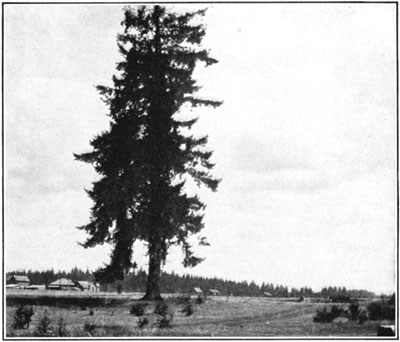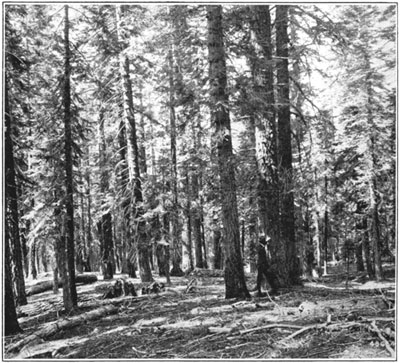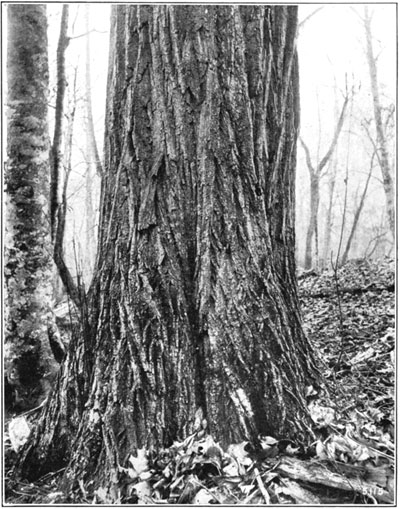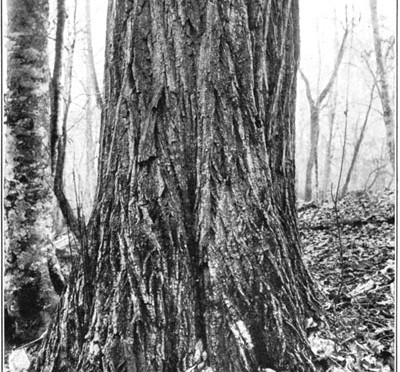Forests of Crater Lake National Park
Douglas Fir (Pseudotsuga taxifolia)
Another very abundant tree at middle elevations, on both the east and west sides, is Douglas fir. (Figs. 6, 7, and 8) This tree occurs commonly in the yellow-pine forests bordering the Anna Creek road, but does not extend far beyond the southern entrance of the park. It is more abundant on the west slopes, reaching an altitude of 6,000 feet and over.

Fig. 6—Douglas fir (Pseudotsuga taxifolia)
The Douglas fir (Pseudotsuga taxifolia) is known to the lumberman under many names, such as red fir, Douglas spruce, Washington fir, and Oregon pine. Distributed throughout western North America, from the Pacific coast to the Rocky Mountains, and from far north in British Columbia to Mexico, it is a hardy tree that must adapt to many and varied climatic and soil conditions. It is this tree that in a large part forms the dark and humid forest of western Oregon, Washington, and British Columbia, where its tall spires rival in height all other American trees save the sequoias of California. In the moist forest of the Puget Sound region, monster trees, over 250 feet in height and 8 to 10 feet through, occasionally are found.

Fig. 7—Douglas fir (Pseudotsuga taxifolia)
In drier regions the trees are much smaller, usually not over 3 feet in diameter and 100 feet in height. The trunks of trees in the higher regions of the Cascades and in eastern Oregon, taper rather rapidly, and except during their early years are free of branches for one-half or more of their length. The corky bark on these trunks usually is broken up into rough furrows and ridges and is dark brown to light brown in color. The tops of young trees are conical and rather pointed, but on old trees the large limbs, with their long, drooping branches, form rather open and airy crowns.

Fig. 8—Douglas fir (Pseudotsuga taxifolia)
Douglas-fir needles are about 1 inch long, and are scattered singly on all sides of the twigs, forming soft sprays of blue-green foliage. Nearly every year some seed is produced, but it is only every three or four years that the seed is abundant. Then the branchlets and twigs bear great quantities of small, russet-brown, pendant cones, that open and scatter their small seeds late in the summer. No other tree in the region has cones like those of the Douglas fir, and they may be recognized at once by their thin crinkled scales and the long three-pointed bracts that project out over each. The cones are pointed at both ends, and have an average length of 2-1/2 inches.
Douglas fir is the most important timber tree in North America, and to-day it ranks second in the lumber production of this country. There is estimated to be more Douglas fir timber yet waiting for the ax of the lumberman than of any other American species. Washington leads in the production of Douglas fir, and Oregon is second. Its wood is light, soft, and strong; from some trees reddish and coarse grained and from others light yellow and as fine-grained as pine. All together it is an admirable and mighty tree, a species that has been the foundation of the lumber industry in the Northwest.
Other pages in this section
*** previous title *** --- *** next title ***


